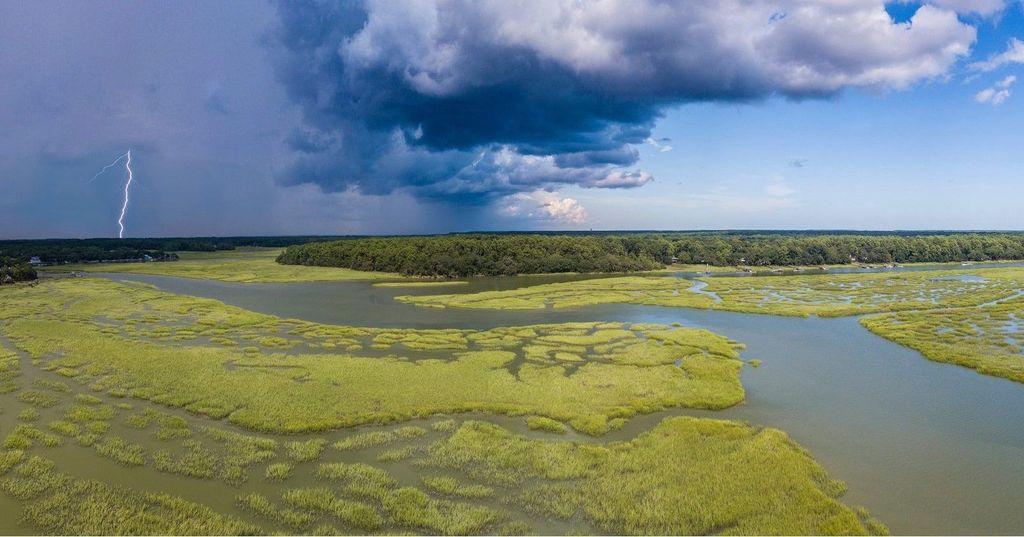Coastal Conservation: Efforts to Protect Texas’s Beaches and Marine Life
Texas’s coastline, spanning over 350 miles along the Gulf of Mexico, is a natural marvel filled with sandy beaches, thriving marine life, and diverse ecosystems. However, increasing environmental challenges such as pollution, habitat destruction, and climate change pose serious threats to these coastal treasures. Coastal conservation is more important than ever to preserve these ecosystems and the wildlife that depends on them.
In this comprehensive guide, we’ll explore the importance of coastal conservation, highlight the ongoing efforts to protect Texas’s coastline, and provide actionable tips for individuals to contribute to these efforts.
Why Coastal Conservation in Texas Matters

A Hub of Biodiversity
Texas’s coastal region is home to some of the most diverse ecosystems in the United States. Coastal wetlands, estuaries, and coral reefs provide critical habitats for a variety of species, including endangered ones like the Kemp’s Ridley sea turtle. Migratory birds such as sandpipers and pelicans use these areas as essential stopover points.
Economic Importance
The Texas coast fuels key industries, including tourism, fisheries, and shipping. Coastal tourism alone generates billions of dollars annually, supporting local businesses and communities. Fisheries in the Gulf of Mexico provide a vital food source and sustain thousands of jobs.
Natural Barrier Against Storms
Coastal wetlands and dunes act as natural buffers, reducing the impact of hurricanes and tropical storms. Preserving these natural defenses is crucial to protecting inland communities from flooding and erosion.
Threats to Texas’s Coastline
Despite their importance, Texas’s coastal areas face multiple threats:
- Coastal Erosion: Human activities and rising sea levels contribute to the loss of beaches and wetlands.
- Pollution: Plastic waste, oil spills, and chemical runoff from agriculture disrupt marine ecosystems.
- Climate Change: Warming waters, ocean acidification, and extreme weather events damage coral reefs and affect the delicate balance of coastal ecosystems.
- Overdevelopment: Urbanization and industrial development lead to habitat loss and increased pollution.
Without intervention, these challenges could have irreversible impacts on Texas’s coast.
Major Coastal Conservation Efforts in Texas

1. Habitat Restoration
Restoring damaged habitats is one of the most effective ways to support coastal ecosystems. Restoration efforts include:
- Seagrass Planting: Seagrass beds are vital for marine life and water quality. Programs like those led by the Texas Parks and Wildlife Department (TPWD) work to replant and monitor these essential underwater meadows.
- Wetland Restoration: Wetlands are critical for filtering pollutants, providing habitats, and preventing floods. The Coastal Wetlands Conservation Program focuses on rebuilding lost wetlands and protecting existing ones.
- Dune Stabilization: Replanting native vegetation on dunes helps prevent erosion and provides a natural barrier against storms.
2. Protection of Marine Life
Efforts to safeguard marine species in Texas include:
- Sea Turtle Conservation: Organizations like the Sea Turtle Restoration Project work to protect endangered species. Volunteers monitor nesting sites, rescue injured turtles, and ensure safe hatching for turtle populations.
- Dolphin Monitoring Programs: Research initiatives track dolphin populations to understand the effects of pollution and climate change on their habitats.
3. Pollution Control
Addressing pollution is a priority for Texas’s coastal conservation:
- Beach Cleanups: Local organizations host regular cleanup events to remove litter and plastic waste.
- Oil Spill Prevention and Response: The Texas General Land Office oversees efforts to minimize the impact of oil spills on marine ecosystems.
- Runoff Management: Agricultural and urban runoff is being tackled through better land-use planning and the use of green infrastructure to filter pollutants.
4. Climate Change Mitigation
Climate change adaptation and mitigation strategies in Texas include:
- Resilience Building: Research institutions, such as Texas A&M University, develop strategies to adapt to rising sea levels and increased storm activity.
- Carbon Sequestration: Coastal wetlands act as carbon sinks, capturing and storing carbon dioxide. Conserving these areas helps combat global warming.
5. Community Involvement
Community-driven efforts play a pivotal role in coastal conservation. Organizations engage local residents, schools, and businesses in volunteer activities, educational programs, and advocacy for sustainable policies.
How Individuals Can Contribute to Coastal Conservation

Protecting Texas’s beaches and marine life is not just the responsibility of organizations and governments. Here are practical steps individuals can take:
1. Participate in Local Initiatives
Join local conservation groups or participate in events such as beach cleanups. Organizations like Adopt-A-Beach offer opportunities to directly contribute to cleaning and preserving Texas’s coast.
2. Reduce Plastic Usage
Plastic pollution is one of the biggest threats to marine ecosystems. Simple actions like using reusable bags, bottles, and utensils can significantly reduce waste.
3. Support Eco-Friendly Businesses
Choose businesses that prioritize sustainability when visiting Texas’s coastal areas. This includes hotels, restaurants, and tour operators that adopt eco-friendly practices.
4. Advocate for Conservation Policies
Get involved in advocacy efforts to support policies aimed at funding conservation projects, reducing pollution, and mitigating climate change impacts.
5. Educate Yourself and Others
Learn about the coastal ecosystems of Texas and share that knowledge with friends and family. Raising awareness is key to building a broader support base for conservation.
Challenges and Opportunities in Coastal Conservation

While there are many successes in coastal conservation, significant challenges remain. Balancing economic development with environmental sustainability requires innovative solutions and increased funding. The rise of eco-tourism offers an excellent opportunity to align economic incentives with conservation goals.
Another key area is technology. From drone surveillance to monitor erosion to AI tools for tracking marine species, emerging technologies provide new ways to address conservation challenges effectively.
Future Outlook: Preserving Texas’s Coastal Legacy
Protecting Texas’s beaches and marine life is a long-term endeavor requiring collaboration among governments, organizations, and communities. As awareness of environmental issues grows, there is hope that more resources will be allocated to conservation efforts. Sustainable development practices, coupled with robust conservation policies, can ensure that Texas’s coastal ecosystems remain vibrant for future generations.
With the combined efforts of conservationists, policymakers, and individuals, Texas’s coastline can continue to thrive as a haven for biodiversity and a source of economic and recreational benefits.
Conclusion
Coastal conservation is not just an environmental concern; it’s a necessity for the well-being of Texas’s economy, communities, and wildlife. From restoring habitats to advocating for sustainable policies, every effort counts in preserving the beauty and biodiversity of Texas’s coastline.
By taking action today, you can play a part in ensuring that Texas’s beaches and marine life are protected for future generations. Whether it’s joining a local beach cleanup, reducing your plastic use, or supporting conservation organizations, your contribution matters.
Together, we can make a difference in safeguarding the treasures of Texas’s coast.
Q&A: Coastal Conservation in Texas
Q1: Why is coastal conservation important for Texas?
Coastal conservation is essential for Texas because it protects vital ecosystems, preserves biodiversity, and supports industries like tourism and fisheries. It also safeguards natural barriers like wetlands and dunes, which protect inland communities from storms and flooding.
Q2: What are the biggest threats to Texas’s beaches and marine life?
The primary threats include coastal erosion, pollution (plastic waste, oil spills, and agricultural runoff), habitat destruction, and climate change, which causes rising sea levels and ocean acidification.
Q3: How do restoration projects help protect coastal ecosystems?
Restoration projects, such as replanting seagrasses and stabilizing dunes, help rebuild habitats, prevent erosion, and improve water quality. These efforts support marine life and enhance the resilience of coastal areas to environmental changes.
Q4: What is being done to protect endangered species like the Kemp’s Ridley sea turtle?
Conservation organizations monitor nesting sites, rescue injured turtles, and work with fisheries to reduce accidental bycatch. Public awareness campaigns and protected nesting areas are also critical for the survival of these endangered species.
Q5: How can individuals help with coastal conservation?
You can contribute by participating in beach cleanups, reducing plastic usage, supporting eco-friendly businesses, advocating for conservation policies, and educating others about the importance of protecting Texas’s coast.
Q6: What role does climate change play in coastal conservation?
Climate change exacerbates coastal erosion, causes rising sea levels, and damages coral reefs and wetlands. Coastal conservation efforts focus on adapting to these changes, such as protecting carbon-storing wetlands and improving the resilience of ecosystems.
Q7: Are there any organizations focused on Texas coastal conservation?
Yes, organizations like the Texas Parks and Wildlife Department (TPWD), Texas General Land Office (GLO), and local groups like Adopt-A-Beach lead initiatives to protect Texas’s beaches and marine life.
Q8: How does sustainable tourism support coastal conservation?
Sustainable tourism minimizes environmental impact by promoting eco-friendly practices, such as reducing waste, protecting wildlife, and supporting local conservation efforts. It ensures that coastal areas remain beautiful and functional for both residents and visitors.
Q9: Can I volunteer for coastal conservation projects in Texas?
Absolutely! Many organizations offer opportunities for individuals to volunteer, such as beach cleanups, habitat restoration projects, and educational outreach programs. Check with local conservation groups or the Texas General Land Office for events near you.
Q10: What is the future outlook for Texas’s coastal conservation?
With increasing awareness and collaboration among governments, organizations, and communities, the future of coastal conservation in Texas looks promising. Continued efforts to address climate change, reduce pollution, and restore habitats will ensure the long-term protection of Texas’s beaches and marine life.





















